The best tablets in 2021
Choosing the best tablet is no easy task, whether you’re looking to outfit the kids with cheap, durable tablets for school or just need a beautiful second screen to keep couchside.
To help you decide which tablet is right for you, we test all of the top devices in our lab and in the real world. In general, Amazon tablets are great for kids and anyone on a tight budget. iPads are best for students and creative pros, especially with the new M1 chip and new displays in Apple’s new iPad Pro 2021 — which we just reviewed. And those who care most about productivity should check out Microsoft’s Surface line or other Windows-powered tablets.
Keep in mind that if you want a keyboard with your tablet, this accessory often does not come standard; the same thing goes for a stylus or pen, so you’ll want to keep these extra costs in mind when shopping. That said, here are the best tablets you can buy right now.
What are the best tablets?
The iPad is synonymous with tablets for a reason: when you buy the basic iPad, you’re guaranteed to get a great screen and strong audio. But when it comes to picking the best iPad for most people, we tend to push people towards the new iPad Air 2020. It may be a little pricier, but if you want to use an Apple Pencil or an attachable keyboard, it’s the best iPad that doesn’t cost an arm and a leg, as it supports the Magic Keyboard and Apple Pencil (2nd Gen). The iPad Pro is the best tablet for those who want a device for work and play; available in both 11-inch and 12.9-inch versions, the new iPad Pro 2021 delivers great performance and a great screen, especially if you splurge for the 12.9-inch version with its new mini-LED display.
For parents or those on a budget, the Amazon Fire tablet line offers some great options. While their Amazon content-first interface may be off putting to those who don’t live in the Prime world, their prices can’t be beat and Amazon’s slowly updating them to USB-C, which it’s got in the Fire HD 10 and added to the Fire HD 8 2020. For those who like to take lots of physical notes, the reMarkable 2 tablet is a one-of-a-kind slate that replicates the feel of pen and paper like no other.
You can also check out the new Microsoft Surface Go 2, which erases the memory of the lackluster original by lasting longer, thinning its bezels and providing a faster processor option. All of that, plus a kickstand that’s as strong as the one used to prop up its big brother, the Surface Pro. And it runs Windows 10, arguably the most capable operating system on any tablet today.
The best tablets you can buy today

The new 8th Gen iPad may be a minor update, but it’s enough to keep the king on its throne. That’s because the A12 Bionic chip provides a welcome speed boost that was once kept to more expensive iPads (which moved up to the A14 chip). The iPad still boasts a fantastic screen for its price, and Apple’s own Pencil and Smart Keyboard Folio are just easier to use than any Bluetooth accessory on the market.
That A12 chip comes in handy now, more than ever, as Apple’s advances in iPadOS have made for more multitasking. Also, iPadOS 14, which ships on the iPad 8, gives you Scribble handwriting to text translation, which makes the Apple Pencil a better buy than before. We just wish Apple would update the iPad’s design (the big bezels are aging) to allow for an easier way to store the Apple Pencil, especially if the iPad won’t work with the excellent 2nd Gen Apple Pencil, which is limited to the iPad Air and iPad Pro.
Read our full Apple iPad 2020 review (10.2 inch).
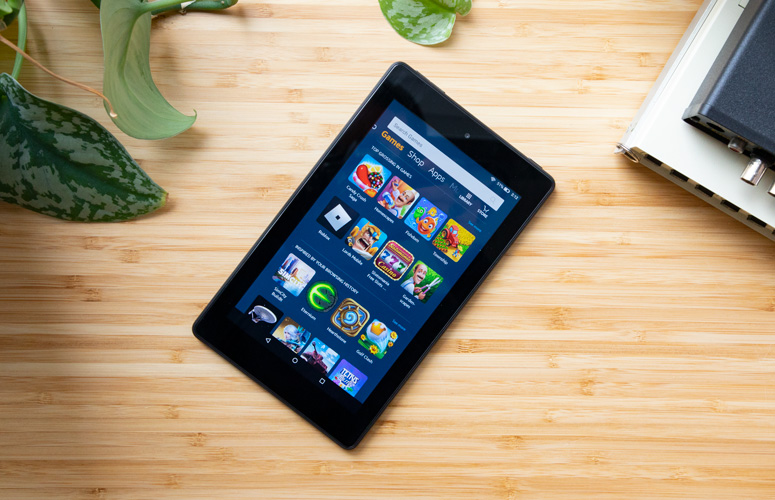
For a lot of customers, price makes the big difference, so Amazon could have coasted when it comes to the $50 Fire 7 tablet. Fortunately, the most recent iteration of the company’s cheapest slate packs a snappy quad-core 1.3 GHz processor, which helps you navigate apps and browse the web faster than you’d expect from a tablet this cheap. And while previous Fire tablets made you tap to activate Alexa — which made no sense, it’s meant to be summoned with your voice — the Fire 7 finally added voice triggers for the digital assistant.
Just don’t expect any frills that come with more expensive tablets. The Fire 7 tablet’s sub-HD screen is not sharp enough for anyone used to an iPad, and its lock screen is filled with ads unless you pay extra. Still, it’s a great pick for kids looking for a media consumption device.
Read our full Amazon Fire 7 review.
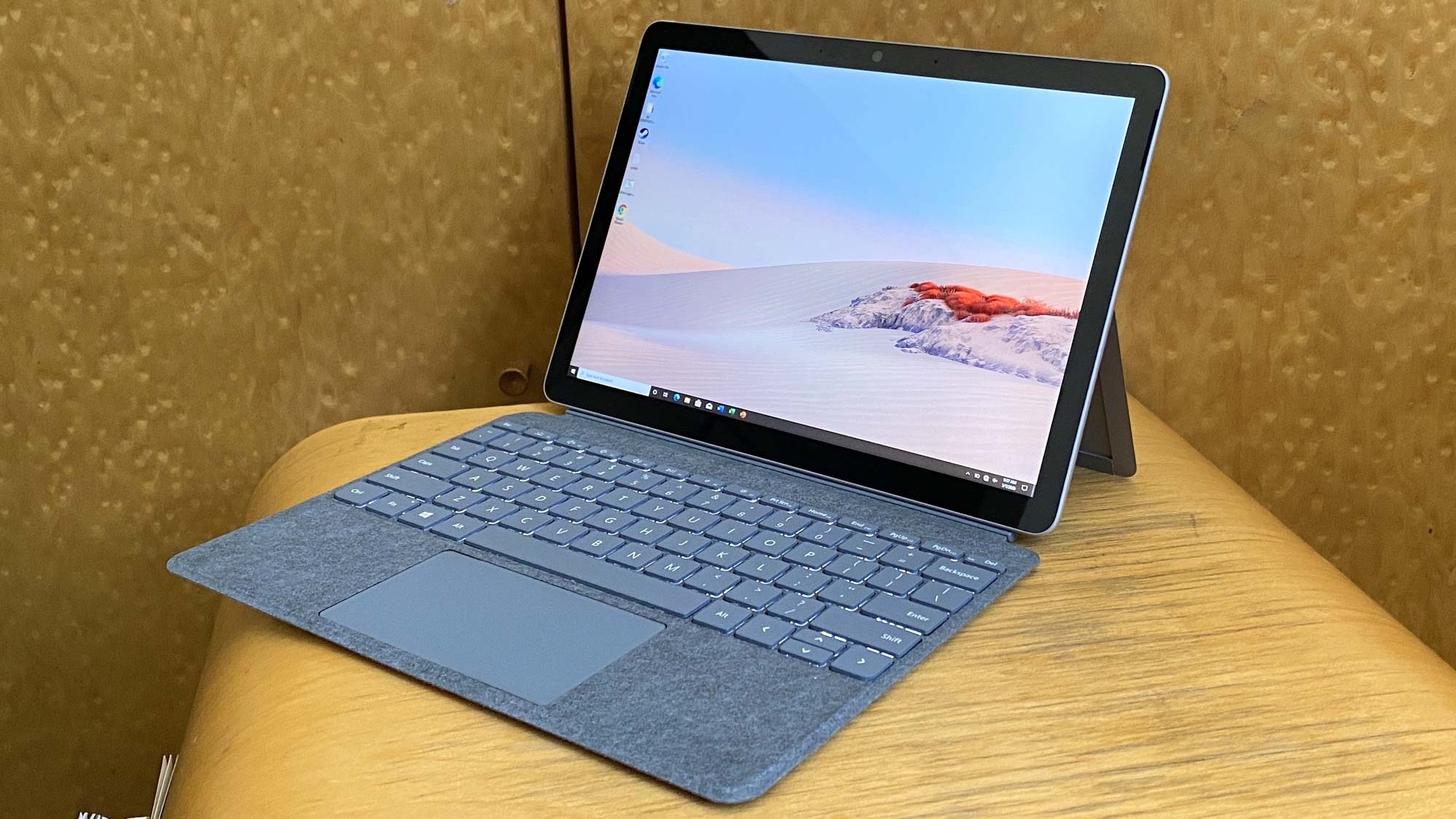
Sometimes, it takes a second try to make a thing go right. The Surface Go 2 takes aim at all the flaws of the predecessor and knocks them all down. First of all, thinner bezels make way for a bigger screen, arguably the most important part of a tablet. The Surface Go 2 has a 10.5-inch display, compared to 10 inches for the previous model.
The biggest upgrade is the Surface Go 2’s 11 hours and 39 minutes of battery life, which is over 5 hours longer than the original Surface Go.. Microsoft also answered my prayers for a laptop with a great webcam. The 5-megapixel 1080p camera in its top bezel is great for the era of online video calls, and its second front camera sensor adds Windows Hello biometric login. Finally, get the Surface Go 2 with the 8th Gen Intel Core m3 upgrade, it’s a little pricier at $629, but it’s definitely the model for multitaskers.
Read our full Microsoft Surface Go 2 review.
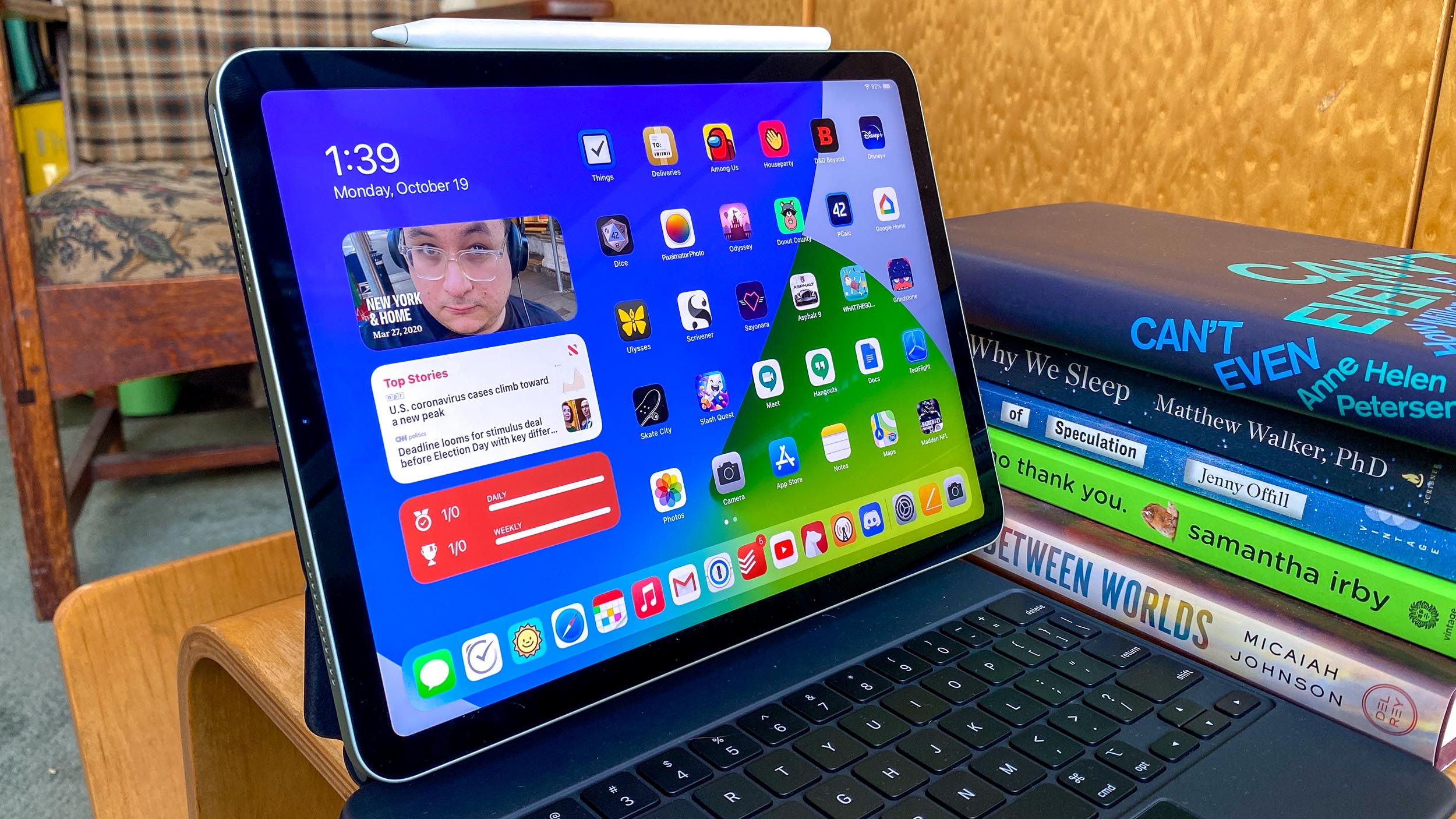

Apple’s iPad Air (2020) borrows a lot of what we like from the iPad Pro, at a more affordable price, and it’s arguably Apple’s best iPad ever (though it’s still not going to sell as well as the 10.2-inch iPad). It’s got the super-thin bezels you’ll recognize from the iPad Pro, as well as support for the Magic Keyboard, which makes it a true laptop competitor. On top of that, Apple’s blazing-fast A14 Bionic chip helps future-proof this tablet with enough speed for demanding apps and multitasking. Oh, and they managed to put Touch ID in the lock button.
Everywhere else, the iPad Air 4 is great, if not the best. Its 10.5 hours of battery life will be enough to keep you going all day long, and its screen is bright and colorful enough to make your next Netflix binge-watch look brilliant. It’s also great for the work from home era, thanks to its 7-megapixel webcam, which beat the Logitech C920 in head-to-head testing done for our review. We only wish the Magic Keyboard wasn’t so expensive: it’s hard to feel great buying a keyboard for almost the same price as the entry-level iPad.
Read our full iPad Air (2020) review.
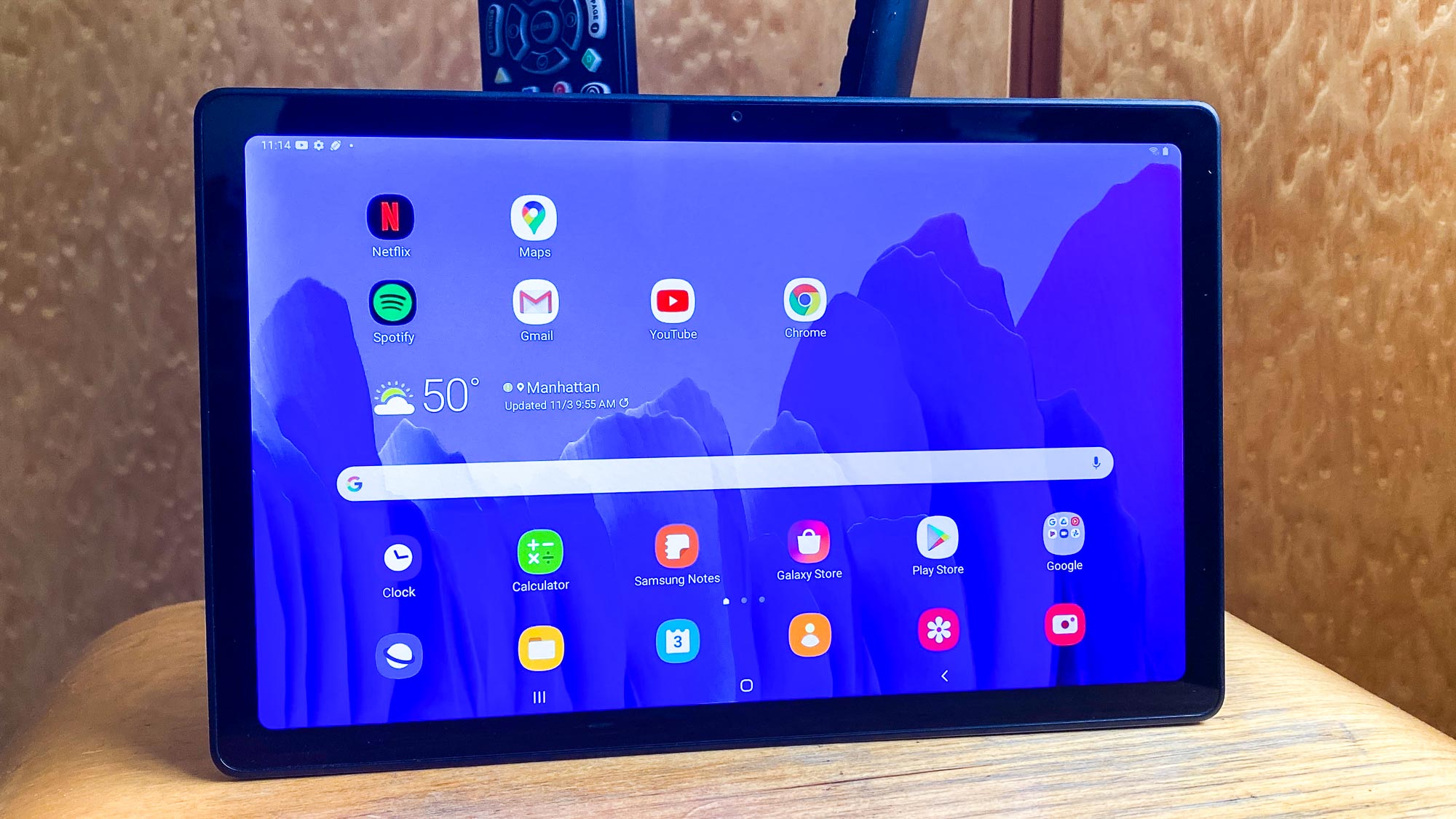
Android fans finally have a true iPad competitor, at a much more affordable price. Retailing for $229 (and on sale often for much less) the Galaxy Tab A7 is a great 10.4-inch tablet for consuming content. Whether you’re browsing the web or streaming movies, you get to focus on your content more, thanks to its super-thin bezels that are thinner than what you get with Apple’s $329 iPad. Oh, and it’s got endurance to spare, lasting 13 hours and 13 minutes on the Tom’s Guide battery test. Oh, and it’s also got an iPad Pro feature that Apple makes you pay a lot for: facial recognition to unlock the device.
And just like Apple’s pricier tablets, the Galaxy Tab A7 charges over USB-C, so you can continue to cut non-reversible microUSB cables out of your life. And while it’s not as fast as the iPad and its screen isn’t as bright, neither is a serious problem at this price. Especially when Samsung gives you true Android with the Google Play app store, and not the watered-down Amazon Fire tablet experience.
Read our full Samsung Galaxy Tab A7 review.
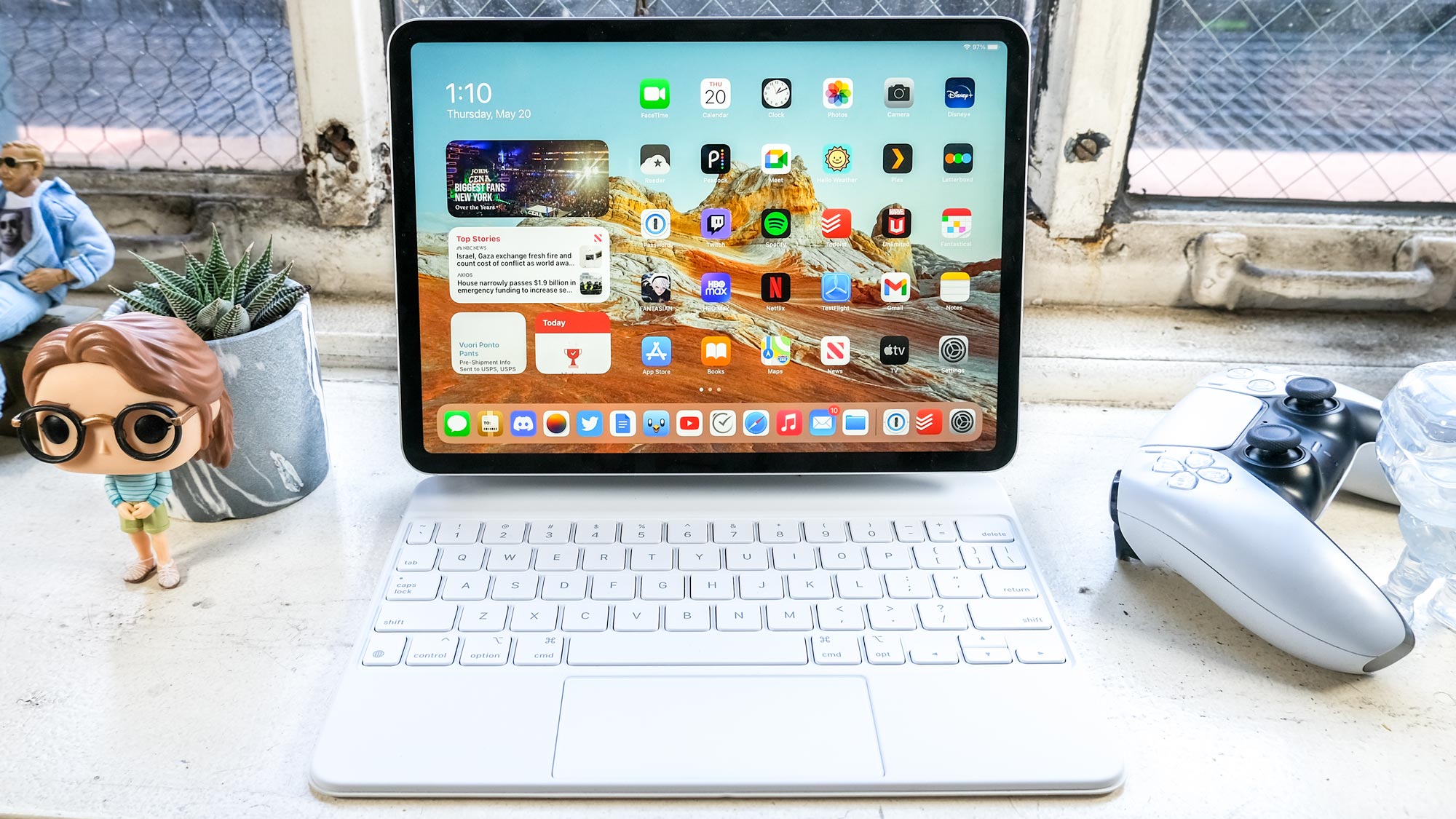
The 12.9-inch iPad Pro may have the better screen, but the 11-inch iPad Pro is arguably better for more people. Not only is its battery life fantastic — over 13 hours on the Tom’s Guide Battery Test — but it’s lighter and fits better with last year’s Magic Keyboard. Plus, it’s $300 less expensive. On top of that, you get the astonishing speed of the Apple M1 chip, which is maybe too powerful for most tablet apps, but they call it the iPad Pro for a reason — this is made for the folks using demanding video and image editing apps.
Of course, the 11-inch iPad Pro 2021 still thrives at the little things. Its bright and colorful display is sharp, its four speakers provide much larger sound than you might expect from such a thin device and. And if you’re willing to pony up the cash its amazing (optional) Magic Keyboard offers the simplest and smoothest tablet typing experience there is.
Read our full iPad Pro 2021 (11-inch) review.
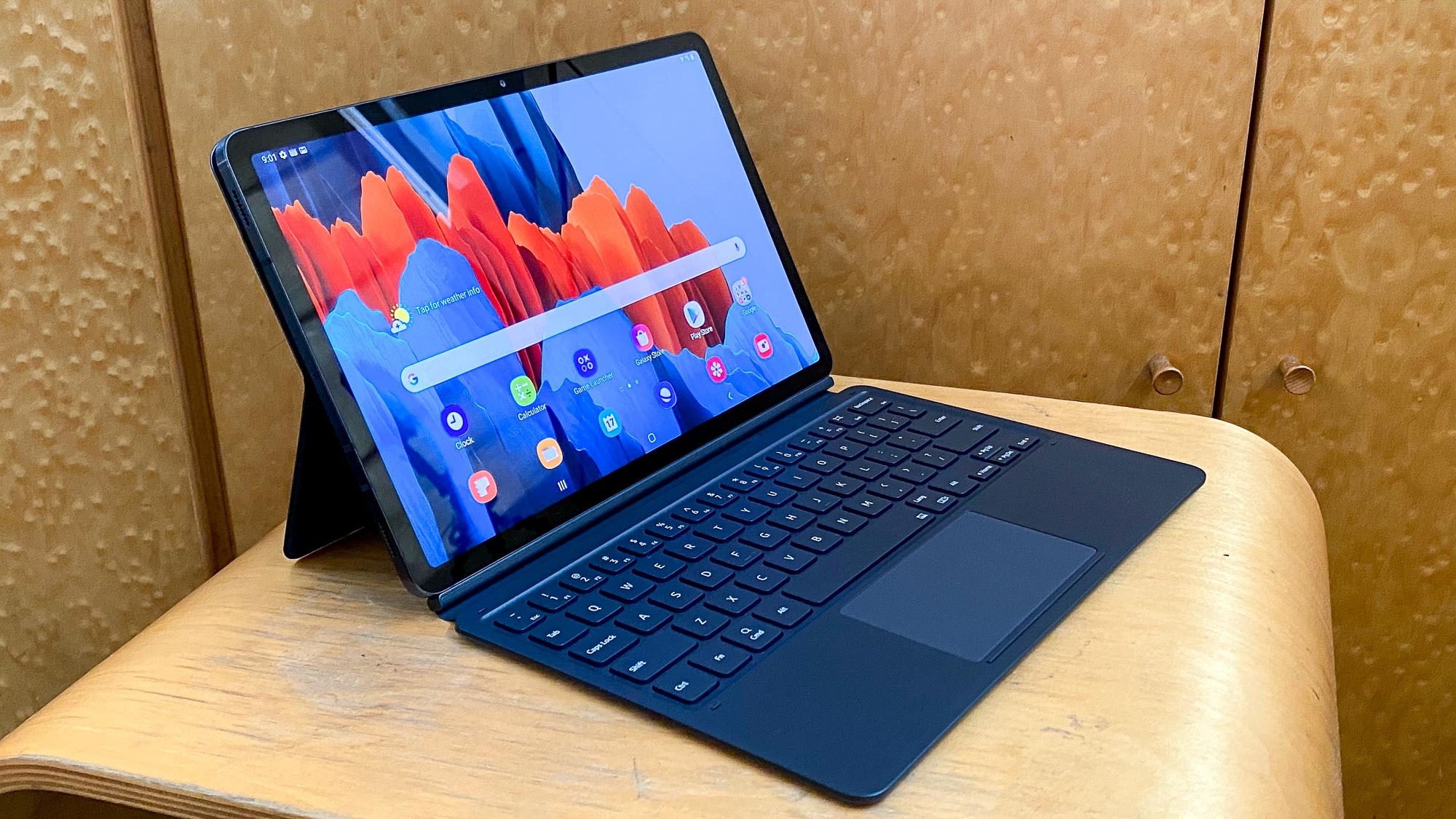
Samsung’s honing in on what makes a tablet perfect. The Galaxy Tab S7 has the slim-bezel/all-screen look that you should get for a tablet above $500. It’s also got a bright, vibrant display that’s super crisp. Plus, over 13 hours of battery life. And while DeX mode isn’t exactly perfect yet — app developers need to take it into consideration — a windowed Android app interface makes for decent productivity, which I noticed while watching nature videos in Android while I wrote parts of my review in Google Docs.
Samsung needs to refine its Book Cover Keyboard though, if it wants to truly compete with the iPad Pro. The S7’s keyboard has too-small number keys for many, and the two-piece nature of the Book Cover Keyboard (a $199 extra add on) is frustrating. Also, Android app developers need to give some polish to their apps’ DeX mode version, and when the performance of the Snapdragon 865+ pales in testing compared to the Core i5 and A12Z chips, the Tab S7 isn’t the iPad Pro killer Samsung may want it to be. While many may go for a cheaper Android tablet, it’s great to see Samsung giving Android users a tablet that can go toe-to-toe with the iPad Pro.
Read our full Samsung Galaxy Tab S7 review.
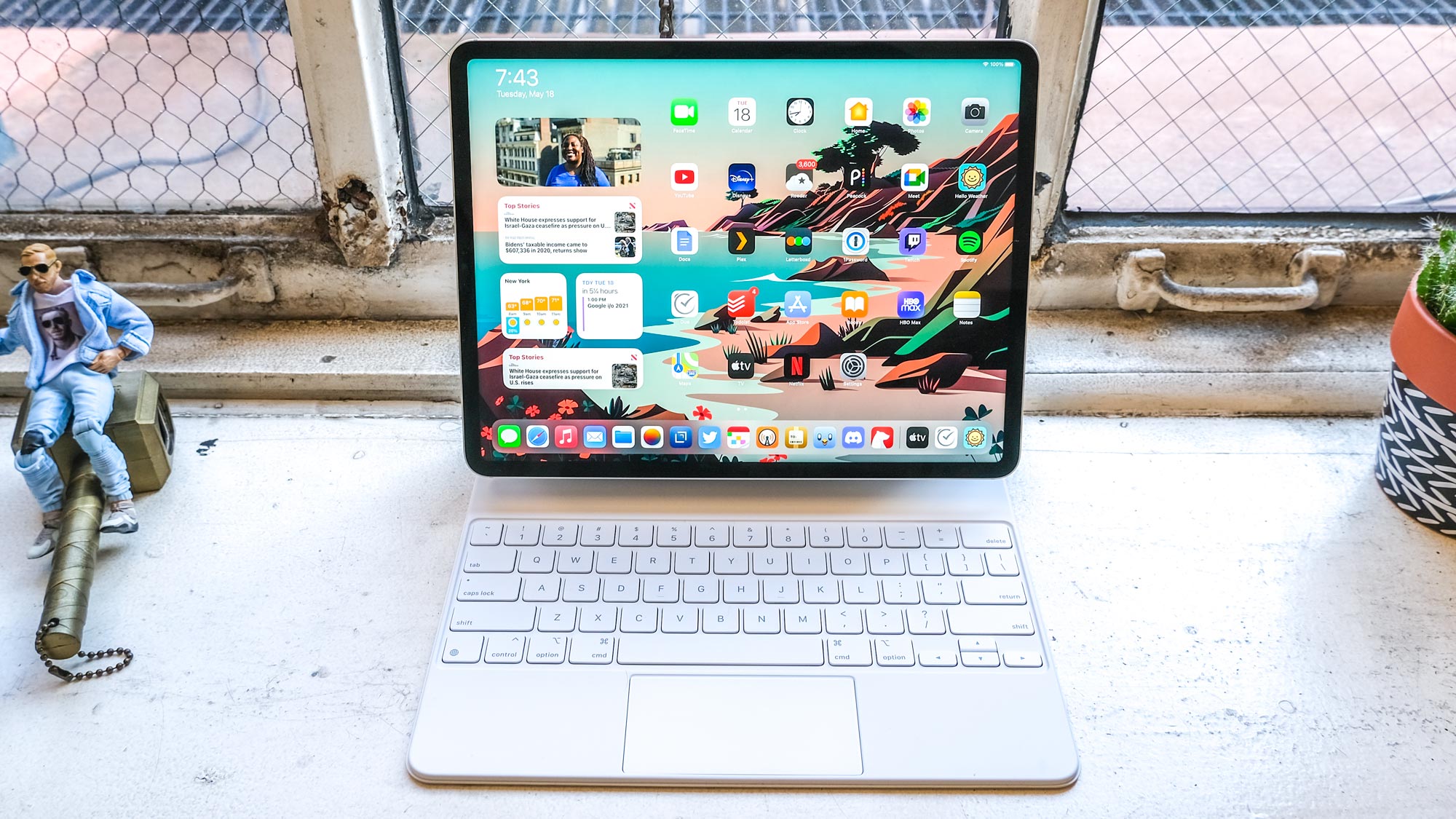
The best got better this year, as Apple dropped its super-powerful M1 chip inside the already mighty iPad Pro 2021. That chip sets new tablet records in Geekbench and Adobe Premiere Rush — continuing Apple’s tradition of putting tons of brawn in its sleek tablets. And this 12.9-inch model benefits from Apple’s Liquid Retina XDR display, which offers much higher brightness — up to 1588 nits! Also, Apple’s got a new video conferencing trick called Center Stage, where the camera tracks and follows you as you move during calls.
Oh, and the basics are still stellar. Its quad-speaker setup booms, its optional Magic Keyboard offers a comfortable typing experience — and its battery life is better than last year’s (lasting hours longer than the Galaxy Tab S7 Plus). That said, the super-bright XDR display needs HDR content to thrive, and that’s not always available — as the likes of Hulu and HBO Max have yet to adopt it. Also, the 12.9-inch iPad Pro 2021 is more expensive than the MacBook Air (and heavier when docked with its Magic Keyboard). But, still, the iPad Pro 2021 is worth it for creative pros who want the best tablet for their next masterpiece.
Read our full iPad Pro 2021 (12.9-inch) review.
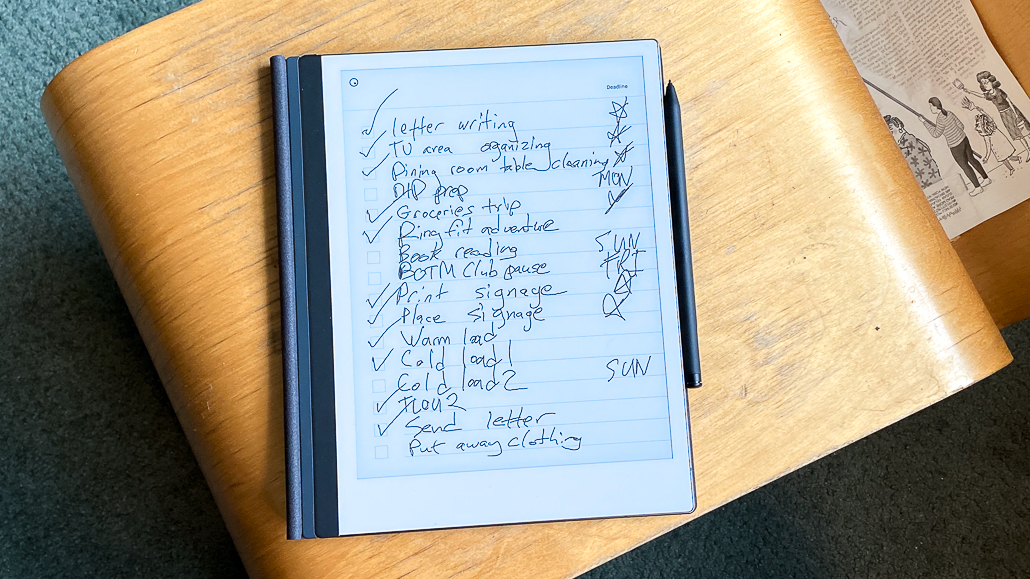
If you’re a writer, who loves pen and paper, you know that the iPad and its Apple Pencil don’t really feel right. That’s where the reMarkable tablets have jumped into the fray, offering a real-feeling writing experience, with a unique screen technology that uses digital paper and the Marker stylus, which feels more authentic when you press its nib against the screen. The reMarkable 2, however, is a much more seductive device, now measuring a sleek 0.2 inches and ditching its plastic frame for a sleeker metallic chassis.
Oh, and it’s not just a notebook. Your documents sync to the cloud so you can read them on iPhones, iPads, PCs, Macs and Android. The reMarkable 2 also translates your handwriting to editable text, so you can share your notes with your whole team, or turn your draft ideas into a manuscript. And its two weeks of battery life means you can just leave it on your coffee table, for when inspiration strikes, rather than keep it plugged in all the time.
Read our full reMarkable 2 review.
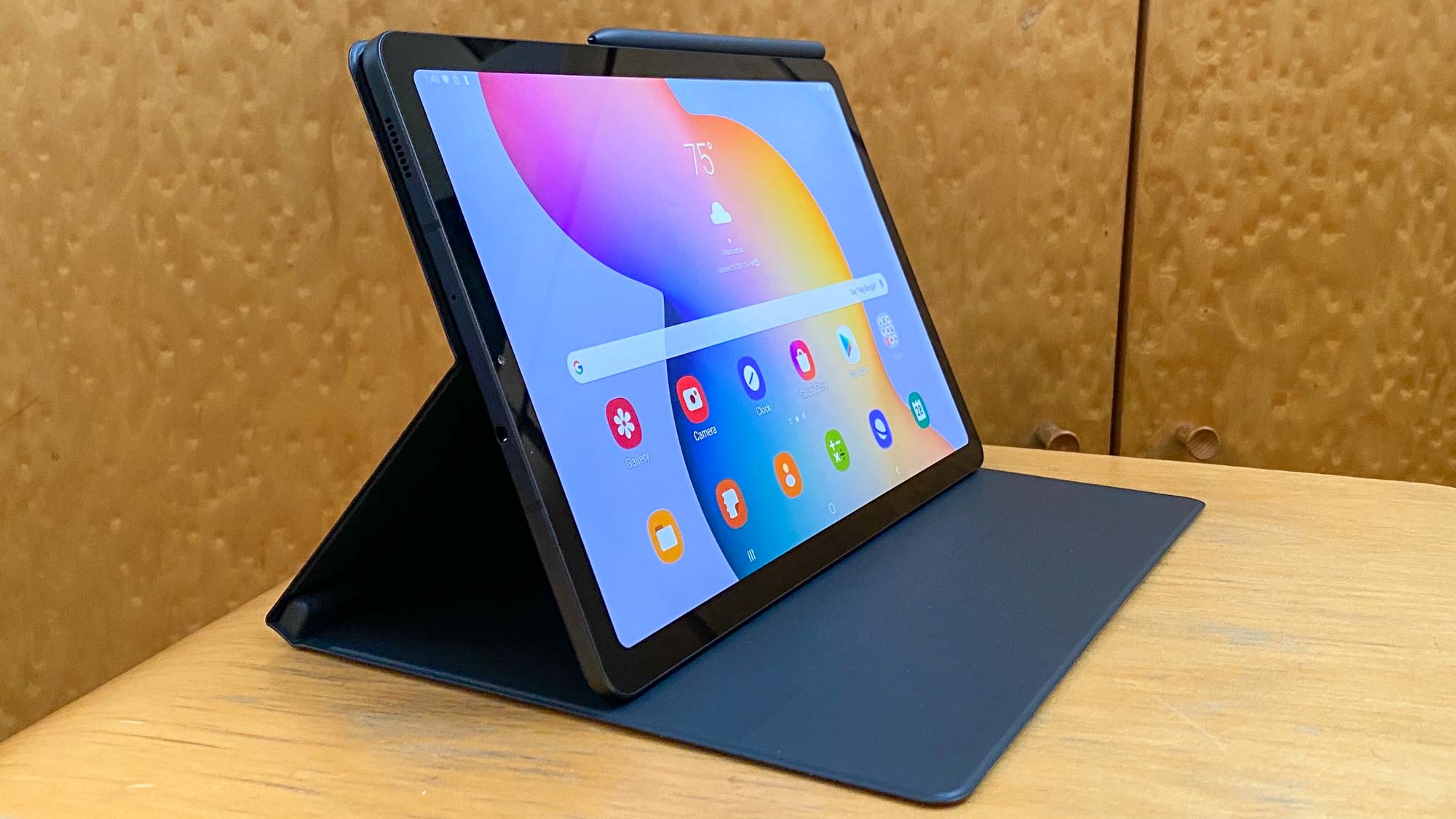
Android tablets don’t have the strongest track record, but on hardware, Samsung’s caught up with the iPad with the Galaxy Tab S6 Lite. This excellent tablet has a ton of battery life — lasting over 12 hours on a single charge — and offers a sleek design with a bright screen and solid sound. This all ties together for a tablet that’s great for consuming content on. The Galaxy Tab S6 Lite’s thin bezels help it stand out from the mid-range tablet crowd even further, making it look more like the iPad Pro than the iPad. Oh, and the S-Pen stylus, which offers low-latency drawing, is included by default, and it snaps to the top of the Tab S6 Lite, so you’re less likely to lose it.
Performance-wise, though, the Tab S6 Lite won’t be blowing people away if they try to multitask. There’s also the matter of Android tablet apps, which still could use more love and care from their developers.
Read our full Samsung Galaxy Tab S6 Lite review.
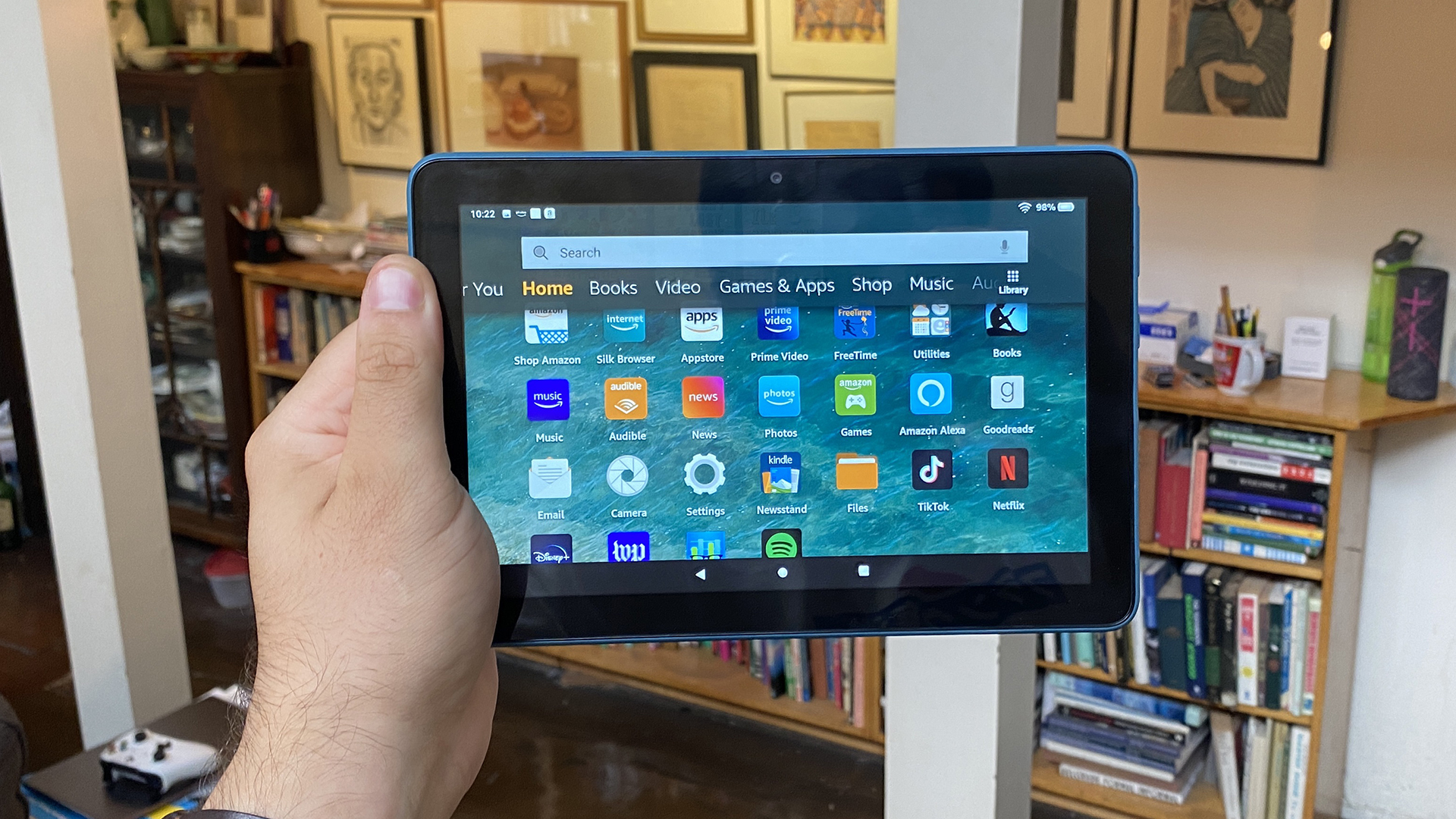
The Amazon Fire HD 8 is a great tablet for certain needs. Its bright screen and epic 13+ hours of battery life make it great for consuming content, and its reversible USB-C port is a feature we wish was in the cheaper Fire 7 tablet. On top of that, this $90 tablet is good enough at everything else — decent audio, OK performance — for its price that I can’t deny how many will find it a great value. I also found its front camera surprisingly crisp when I snapped some selfies while writing the review, as more expensive laptops have much worse webcams.
That being said, anyone who wants the completeness of the Google Play Android app store or the iPad’s iOS app store might feel a little ticked off at Amazon. The lack of Google’s own apps, which you need to sideload to use, is frustrating to folks who don’t like to use inferior web-based versions of those apps.
Read our full Amazon Fire HD 8 review.
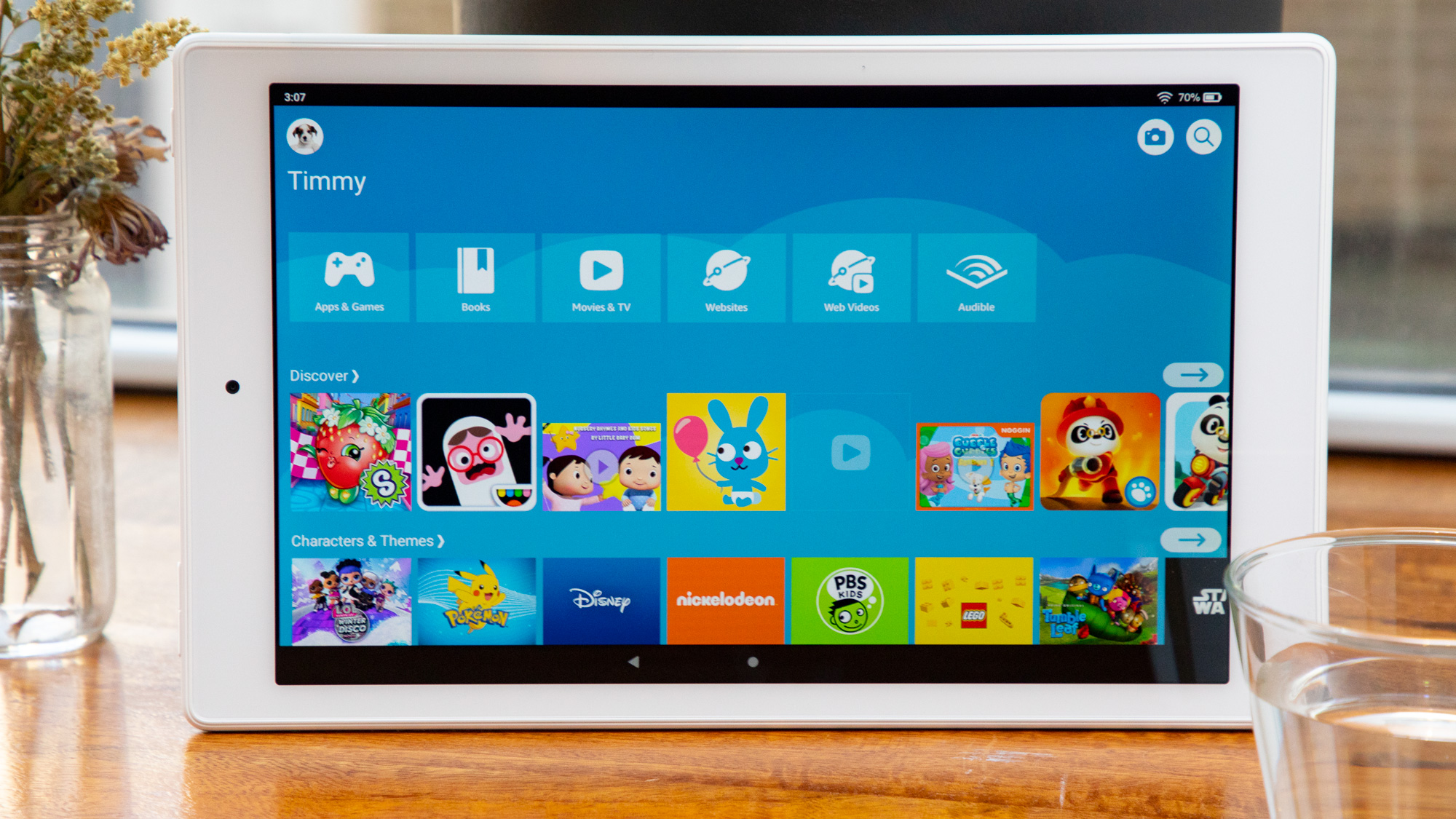
If your only experience with Amazon Fire tablets has been the very affordable Fire 7, you might not have expected the 2019 Fire HD 10. Surprisingly fast with an octa-core processor, the Fire HD 10 sports a bright and colorful Full HD screen that is great for binge watching your favorite Amazon Prime shows. Even better, this tablet lasts for more than 13.5 hours on a single charge.
But, for as much as the Fire HD 10 gets right, its Amazon-first Fire OS operating system still could use a little more from outside the Amazon world. For example, this Android-based tablet still doesn’t allow you to install Google’s own apps, so you’re forced to use web apps for Gmail and YouTube.
Households that make the most of their Prime membership, though, should definitely consider the Fire HD 10. It’s definitely the best tablet from Amazon.
Read our full Amazon Fire HD 10 review.
How to choose the best tablet for you
Start by thinking about the operating system you live in, which means opening your pocket and thinking about how much you rely on your smartphone. iPhone owners may jump straight to the 7th Gen iPad or iPad Pro, and they’d be right to do so — iMessage integration and the shared app ecosystems across iOS and iPadOS are an ideal combination. But if the iPad Pro is too expensive and the 7th Gen iPad isn’t powerful enough, the iPad Air’s faster CPU makes it the iPad to definitely consider, though I can’t blame budget-conscious shoppers for going with the regular iPad.
Android folks have a wider set of options, but since Android apps aren’t thriving on tablets as much as anyone would hope, this is a good time to consider all of your options. Yes the Galaxy Tab S6 has a fantastic screen and Android apps, but isn’t Windows 10 a more capable platform? If you’re nodding your head “yes,” then the Surface Go 2 is the best tablet for you. That all being said, if you’ve got a big enough family, and you’re all living in the Amazon Prime ecosystem, go for the Fire 7 if you’re trying to fit to a budget, and the Fire HD 10 if you are tired of devices that don’t have USB-C.
How we test tablets
First, we run as many benchmarks as that tablet will allow, to see how fast they are in ways that can be compared directly against competitors. We say “will allow” as some tablets, like Amazon’s Fire slates, have trouble with side-loaded Android apps. We then use colorimeters and light meters to measure how colorful and bright these tablets’ screens can get. After that, we put them through our in-house battery test, which times how long it takes — while surfing the web with brightness at 150 nits — to drain a tablet of a charge.
After that, we do the same things you do — browse the web, watch YouTube, play games, compose emails — and then a lot more. We try and write some (or all) of our tablet reviews on the tablets we’re testing, if there’s a keyboard for it that is. Nobody wants to write a magnum opus on a glass screen, trust me.
Then, we keep our eyes on the next incoming tablets. Walmart just revealed two Onn Pro tablets, though they’re not iPad Pro competitors (outside of having USB-C). We look forward to testing out the 8-inch Onn and 10.1-inch Onn, and give Walmart points for running Android 10.
They’re like Amazon Fire tablets in that they’re chock full of Walmart buttons and online store navigations, which would appeal to those who do a lot of shopping at Walmart. We look forward to testing them and giving them full reviews.
For all the latest Technology News Click Here
For the latest news and updates, follow us on Google News.
